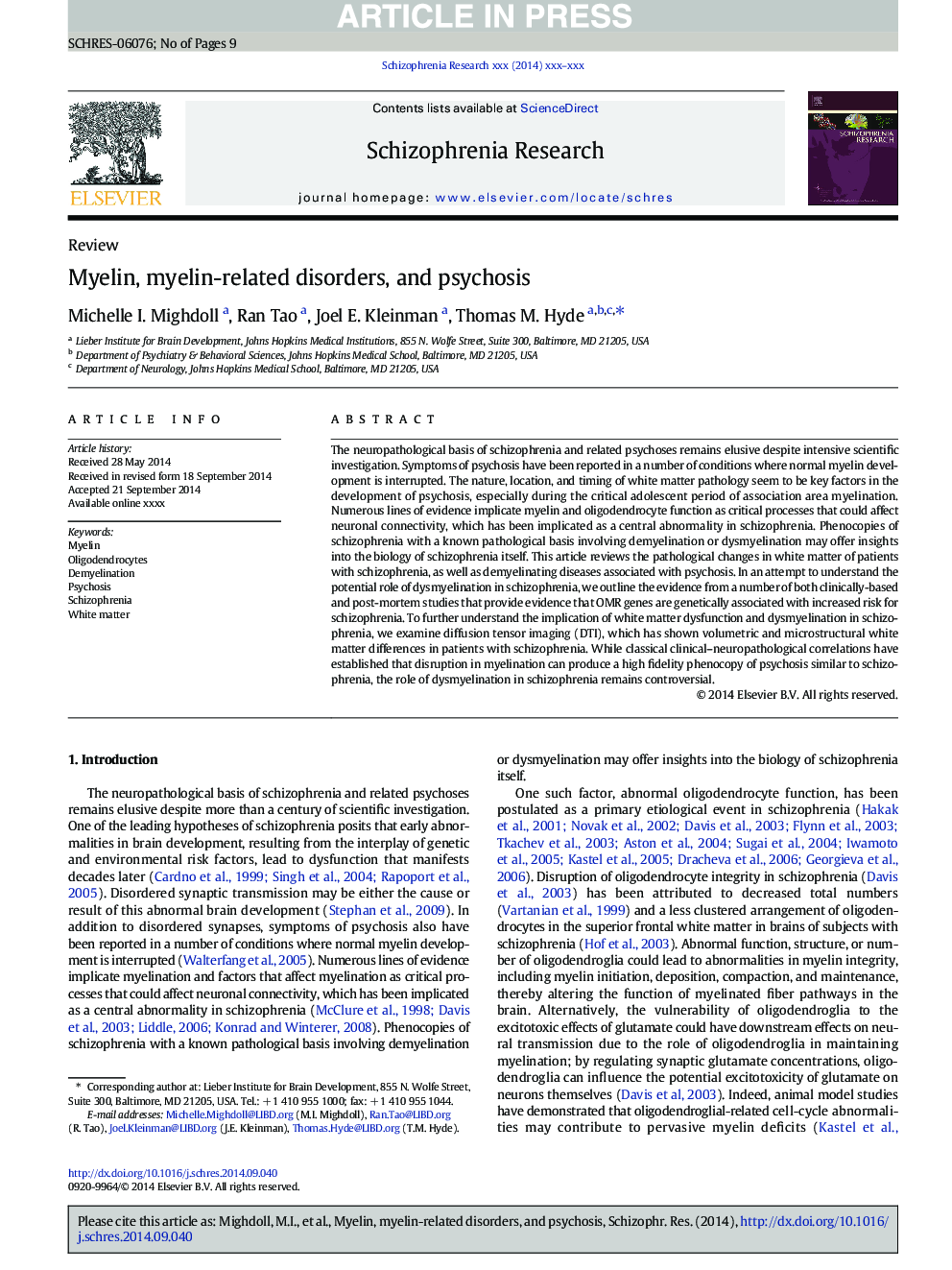| Article ID | Journal | Published Year | Pages | File Type |
|---|---|---|---|---|
| 10307420 | Schizophrenia Research | 2015 | 9 Pages |
Abstract
The neuropathological basis of schizophrenia and related psychoses remains elusive despite intensive scientific investigation. Symptoms of psychosis have been reported in a number of conditions where normal myelin development is interrupted. The nature, location, and timing of white matter pathology seem to be key factors in the development of psychosis, especially during the critical adolescent period of association area myelination. Numerous lines of evidence implicate myelin and oligodendrocyte function as critical processes that could affect neuronal connectivity, which has been implicated as a central abnormality in schizophrenia. Phenocopies of schizophrenia with a known pathological basis involving demyelination or dysmyelination may offer insights into the biology of schizophrenia itself. This article reviews the pathological changes in white matter of patients with schizophrenia, as well as demyelinating diseases associated with psychosis. In an attempt to understand the potential role of dysmyelination in schizophrenia, we outline the evidence from a number of both clinically-based and post-mortem studies that provide evidence that OMR genes are genetically associated with increased risk for schizophrenia. To further understand the implication of white matter dysfunction and dysmyelination in schizophrenia, we examine diffusion tensor imaging (DTI), which has shown volumetric and microstructural white matter differences in patients with schizophrenia. While classical clinical-neuropathological correlations have established that disruption in myelination can produce a high fidelity phenocopy of psychosis similar to schizophrenia, the role of dysmyelination in schizophrenia remains controversial.
Related Topics
Life Sciences
Neuroscience
Behavioral Neuroscience
Authors
Michelle I. Mighdoll, Ran Tao, Joel E. Kleinman, Thomas M. Hyde,
